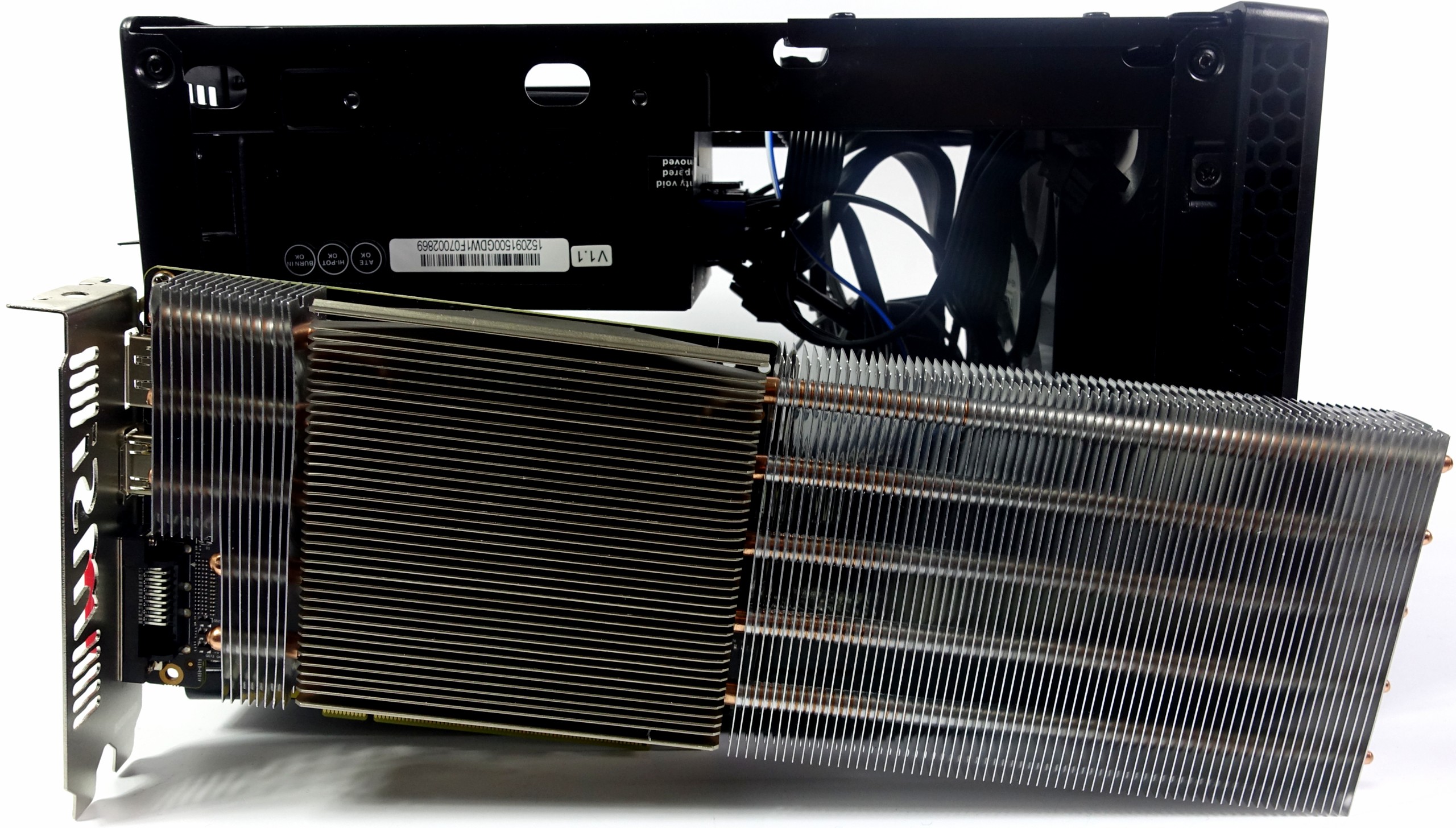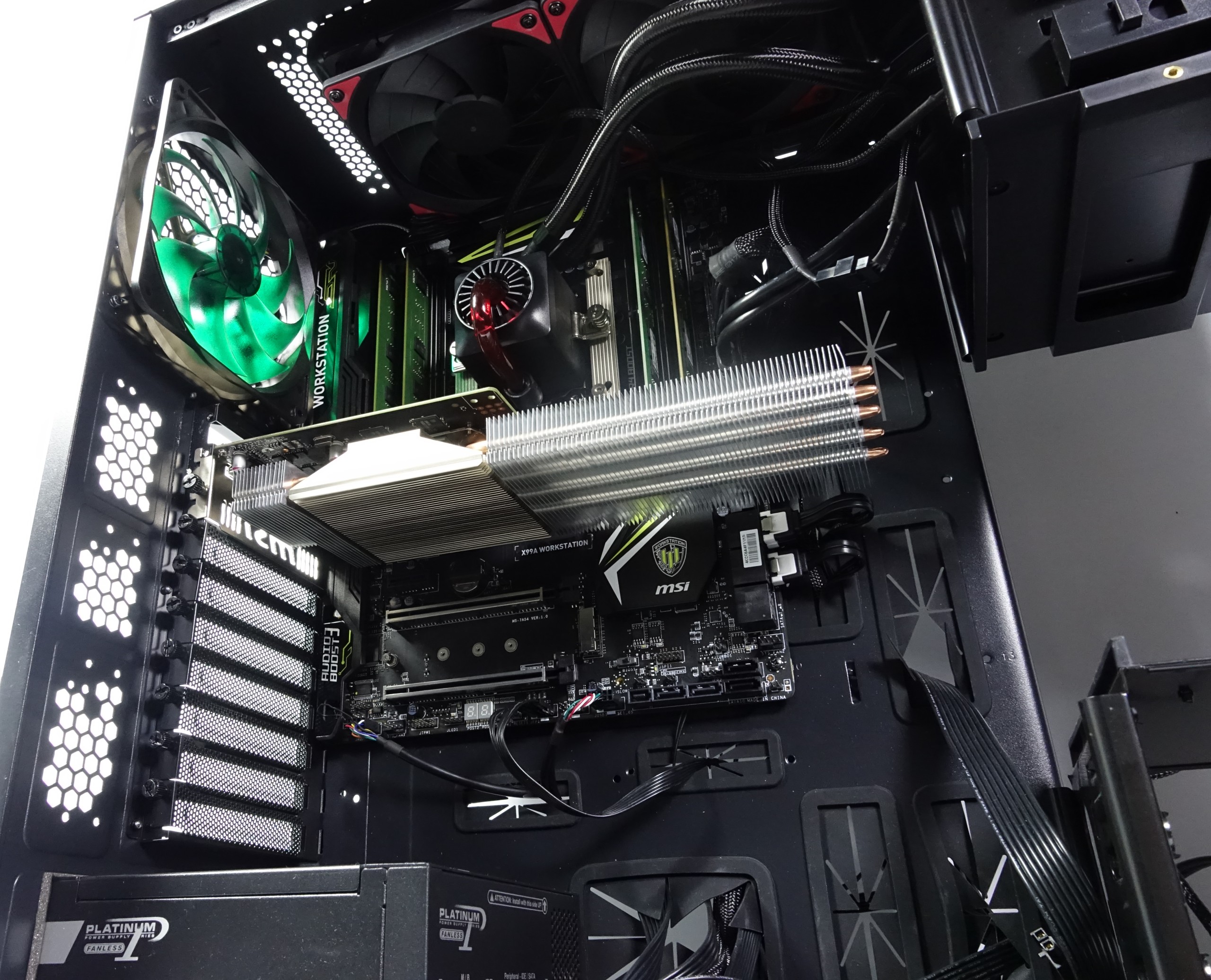Nvidia GeForce GTX 1050 Ti Passive Cooling Mod
The Right Case & Placement
There needs to be at least 34cm of horizontal space available in whichever case you choose. After test-fitting the card’s positioning during installation, it is clear that, due to the cooler's extreme length, any chassis with a motherboard mounted horizontally is going to be impractical. Just to be sure we're covering our bases, we'll measure how the modified card/cooler behaves with and without plenty of airflow inside the case.
In our first run-through, we installed the card in a workstation. Its case fans were all disabled, except for two 240mm radiator fans that spin at 300 RPM. In addition to a slight under-pressure condition caused by those fans pulling air upward, the card enjoys plenty of room inside the chassis, which is ideal for the passive sink's convection-based heat dissipation.
For the second test, we pulled out our build from 2013, which employs passive cooling exclusively, including the CPU. We also armed it with a temperature-controlled fan setup as backup. Our GeForce GTX 650 project needed the extra cooling on and off. Can the GTX 1050 do without it, and deliver better performance in the process? We're excited to quantify the improvement in efficiency over the past three years.
Compared to the GTX 650 and GTX 1050 Ti, our passively-cooled 750 Ti had to make do with an aftermarket Sapphire heat sink that we modified to fit since the card's screw holes wouldn't allow for anything larger.
SummaryMounting the card/cooler combination horizontally allows for optimal cooling via convection. Vertical mounting would be less efficient.A large amount of free space in the case is advantageous for any passive cooling experiment.The card/cooler’s own convection process should not be impacted by other hardware in the case, if possible.
Get Tom's Hardware's best news and in-depth reviews, straight to your inbox.
Current page: The Right Case & Placement
Prev Page Installing An Aftermarket Cooler Next Page Clock Rates, Voltages & Temperatures
Igor Wallossek wrote a wide variety of hardware articles for Tom's Hardware, with a strong focus on technical analysis and in-depth reviews. His contributions have spanned a broad spectrum of PC components, including GPUs, CPUs, workstations, and PC builds. His insightful articles provide readers with detailed knowledge to make informed decisions in the ever-evolving tech landscape
-
AndrewJacksonZA Thank you for the really nice article Igor. It was an unexpected surprise and a pleasure to read. :-) Very interesting to read.Reply -
Poozle you know setting the fans to even minimal (20-30%) where you cant detect an audible difference would be safer and nearly as quiet... but I digressReply -
FormatC The problem is, that the marketing is telling us that it works. I ordered an original passive card directly from a manufacturer and will check it in a short follow-up. Without any airflow in the case this must fail ;)Reply -
AndrewJacksonZA Reply
It immediately reminded me of Sapphire's R9 Fury Tri-X:19136703 said:That giant cooler is so funny looking on that little card. :)
-
FormatC Same principle, but the used cooler is 4 years old.Reply
It seems that Sapphire copied the idea ;) -
thor220 It looks like the large tail of that Cooler isn't even doing anything. No point in making a passive cooler that big if it can't transfer the heat.Reply
I would much rather see a passive water cooled setup with no fans, only the pump. -
TJ Hooker Reply
What makes you say that? The heat pipes extend the length of the cooler, even the fins at the end should be absorbing and dissipating some of the heat.19139141 said:It looks like the large tail of that Cooler isn't even doing anything. No point in making a passive cooler that big if it can't transfer the heat.


